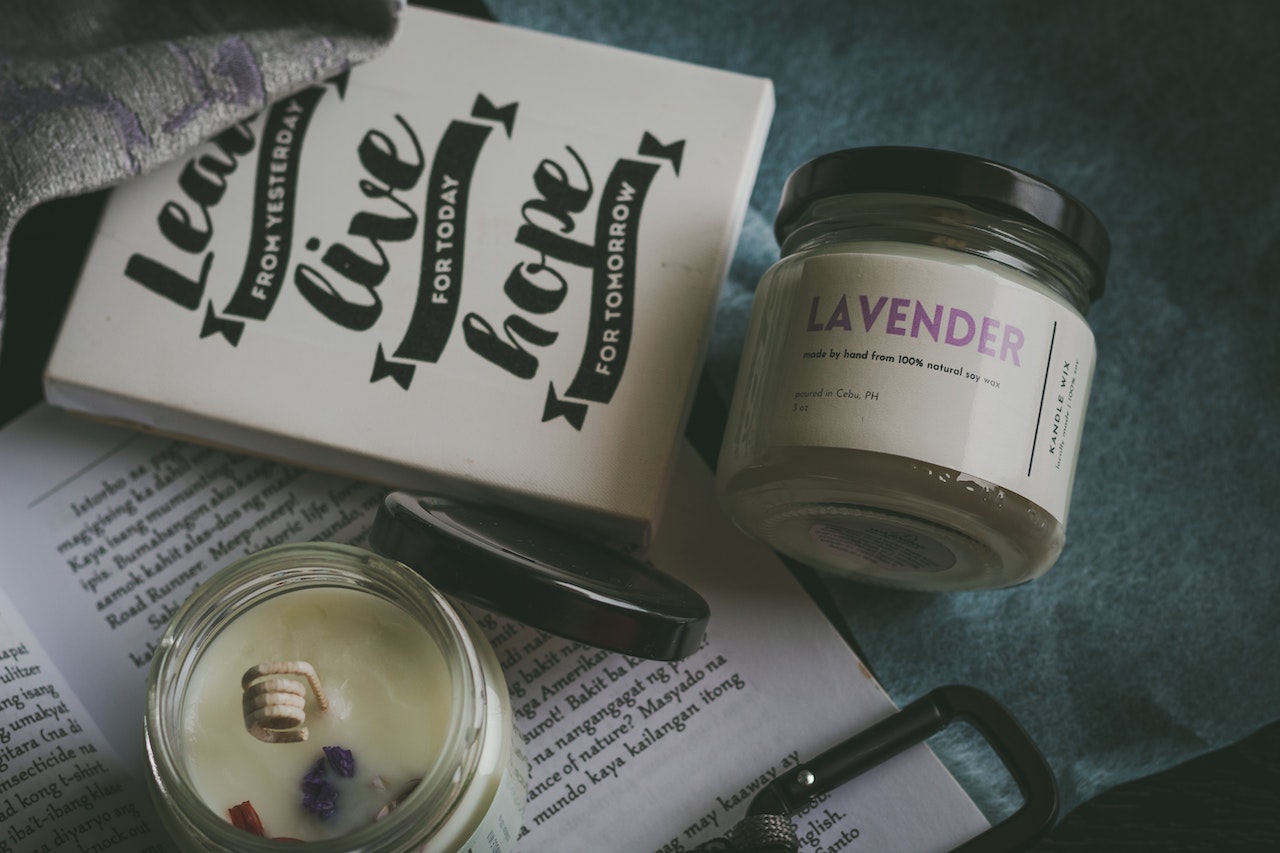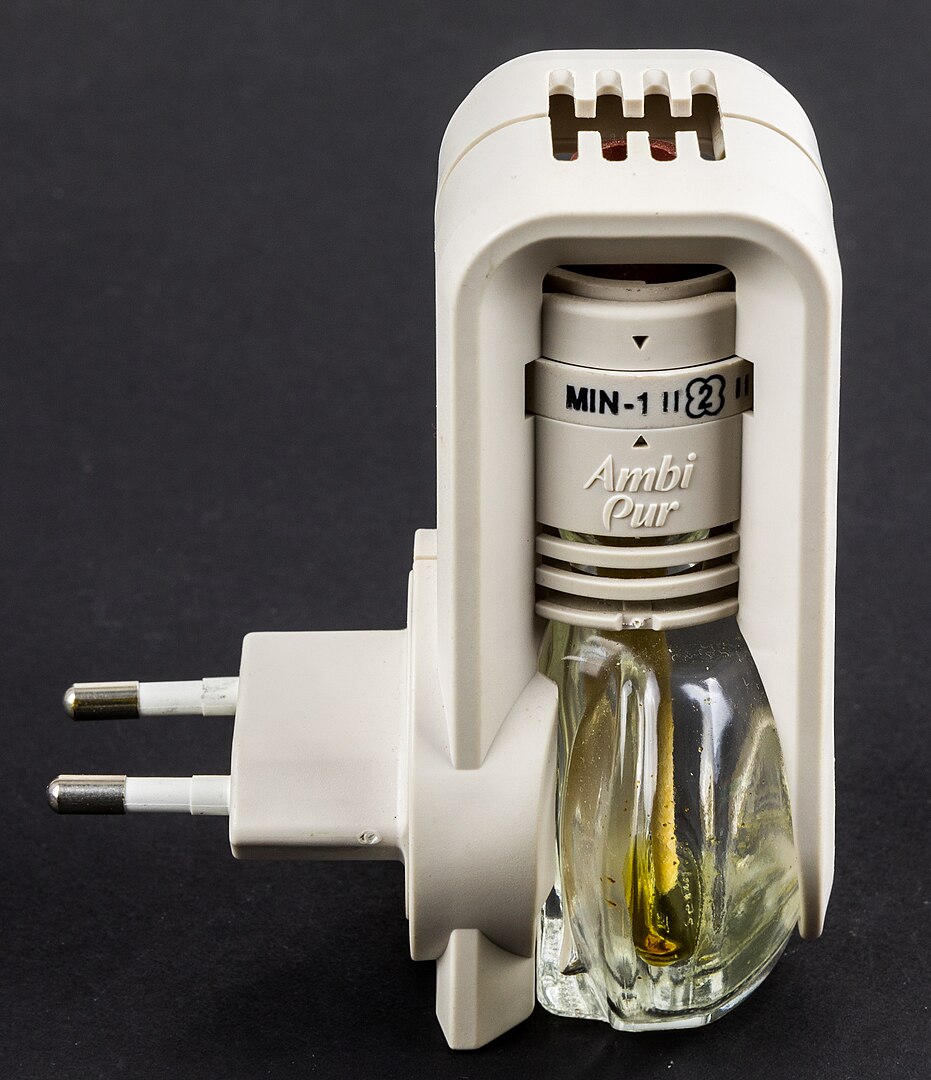Amid the constant demands of modern life, the pursuit of enhanced productivity and unwavering focus has become a universal goal. An intriguing strategy gaining momentum is the use of scented candles to create conducive environments that foster mental clarity and heightened concentration. Beyond their decorative allure, these candles are crafted with specific fragrances, each possessing the potential to evoke distinct cognitive and emotional responses.
Certain scents, such as invigorating citrus or refreshing peppermint, are believed to stimulate alertness and rejuvenate the mind, making them ideal companions for workspaces or study areas. Herbal aromas like rosemary and eucalyptus are associated with mental clarity and creativity, aiding in overcoming mental fatigue and maintaining sustained attention. By engaging the olfactory senses, scented candles tap into the profound connection between scent and memory, offering individuals a novel approach to fine-tuning their cognitive performance.
As workplaces and study spaces transform into havens of productive energy, the trend of utilizing scented candles gains credence as a personalized and holistic tool for optimizing productivity and honing focus. Experimentation with various scents presents a customizable journey to find the fragrances that resonate best with individual preferences and objectives. As individuals increasingly recognize the potential of scented candles beyond their aesthetic charm, these fragrant companions stand poised to shape environments that elevate productivity and sharpen focus in an ever-demanding world.
The Nature of Workplace and Study Areas
The nature of workplace and study areas is characterized by their distinct yet interconnected roles in fostering productivity, learning, and personal growth. In the workplace, these spaces serve as the hub for professional activities, encompassing a diverse range of tasks from collaborative brainstorming to solitary analytical work. The environment needs to promote efficient communication, teamwork, and innovation, while also providing opportunities for focused concentration. A balance between open spaces for collaboration and quiet zones for individual tasks is crucial, reflecting the dynamic nature of modern work environments. Flexibility has become paramount, especially with the rise of remote work and the need to accommodate varying work styles and preferences.
Study areas, whether within traditional classrooms or personal study corners, share the common objective of providing an atmosphere conducive to absorbing knowledge and cultivating intellectual prowess. These spaces should encourage deep engagement with academic material, facilitating critical thinking, information retention, and the synthesis of complex concepts. A well-designed study area integrates technology and resources that support research, while also offering a sense of tranquility that aids in effective learning. The shift towards blended and online learning has redefined the nature of study spaces, demanding adaptability to virtual platforms and a seamless integration of digital tools.
While the nature of workplace and study areas may differ, both require environments that prioritize individual well-being and holistic performance. Ergonomic design, proper lighting, and acoustics play a vital role in minimizing distractions and maximizing cognitive engagement. Incorporating elements like greenery, comfortable furniture, and natural lighting can contribute to a more inviting and stimulating atmosphere. Ultimately, these areas should facilitate personal growth, skill development, and the achievement of goals, whether in the realms of professional success or academic excellence.
Increasing Productivity and Focus with Scented Candles
Increasing productivity and focus with scented candles involves strategically harnessing the power of aromas to create an environment that optimizes cognitive function and task performance. By selecting scents that align with specific goals and desired outcomes, individuals can create a sensory experience that enhances concentration, reduces stress, and promotes a state of flow.
Invigorating scents like peppermint or eucalyptus can stimulate alertness and mental clarity. Lighting these candles during tasks that require focused attention can help combat mental fatigue and increase overall productivity. Calming scents such as lavender or chamomile can create a tranquil atmosphere that reduces anxiety and distractions, facilitating a state of deep concentration and task immersion.
To effectively leverage scented candles for productivity and focus, it’s important to establish rituals and routines. Lighting a particular candle at the start of a work or study session can serve as a cue for the brain to transition into a focused mindset. Over time, this association between the scent and productive work can become ingrained, making it easier to enter a state of concentration.
Short breaks for deep breaths of the scented candle’s aroma can provide micro-moments of relaxation and mental rejuvenation, preventing burnout and supporting sustained productivity. Additionally, creating a clutter-free and organized workspace enhances the impact of scented candles, ensuring a harmonious environment that contributes to improved cognitive performance and task completion.
Ultimately, scented candles offer a multi-sensory approach to boosting productivity and focus. By intentionally selecting scents that align with specific tasks and creating a consistent routine, individuals can create an environment that fosters optimal cognitive functioning, emotional well-being, and task engagement.
Scents That Can Boost Productivity and Concentration
In a 2016 study that was published in the international, peer-reviewed journal Scientia Pharmaceutica, researchers used electroencephalography (EEG) to measure how different types of scents affected the electrical activity in different parts of the brain. Using this method, they were able to find out how olfactory stimulation, or smells, affected memory, thought, attention, and other mental processes.
Here are some scientifically proven scents that researchers have identified as beneficial for improving productivity and concentration when infused into a workspace:
1. Lavender
Lavender is indeed renowned for its soothing properties, and linalool, the chemical present in its aroma, has been associated with promoting feelings of calmness. The use of lavender fragrance oil in scented candles can effectively diffuse its relaxing scent. Lighting a lavender-scented candle can help you unwind and refocus by clearing your mind and creating an atmosphere conducive to relaxation and mental clarity.
2. Lemon
The refreshing and invigorating aroma of lemon has been acknowledged for its ability to boost energy and alertness. The citrusy scent of lemon is known to promote a heightened sense of alertness and mental clarity, making it particularly beneficial for combating distractions during activities like Zoom meetings. Furthermore, the connection between lemon essential oil and the stimulation of the limbic system underscores its role in supporting focus by tapping into the brain’s emotional and cognitive functions.
3. Sandalwood
Sandalwood, renowned for its grounding and tranquil aroma, can play a role in boosting productivity and focus by promoting a serene work environment. Its calming effects help reduce stress and anxiety, creating a mental space conducive to concentration and clear thinking. Sandalwood’s ability to instill a sense of balance and mindfulness supports sustained attention to tasks, facilitating improved cognitive performance and overall productivity in the workspace.
4. Jasmine
Jasmine’s properties in reducing fear, depression, and insecurities are indeed well-regarded. The use of jasmine fragrance in scented candles can effectively diffuse its powerful floral scent. Lighting jasmine-scented candles can offer quick revitalization by promoting a positive emotional state and improving focus, making it a beneficial tool for managing stress and maintaining concentration during challenging academic periods.
5. Ylang-Ylang
Ylang-ylang, known for its sweet and floral aroma, can boost productivity and focus by reducing stress and creating a calming environment. Its relaxation-inducing properties help alleviate anxiety, enabling a more focused and clear mindset. Ylang-ylang’s ability to promote emotional well-being contributes to improved concentration and cognitive function, making it a valuable scent for creating a balanced and productive workspace.
6. Rose
Rose, recognized for its comforting and soothing scent, can enhance productivity and focus by fostering a positive and calming work atmosphere. Its aroma has the potential to reduce stress and create an environment conducive to clear thinking and concentration. By promoting relaxation and emotional well-being, rose contributes to improved cognitive performance and sustained attention, making it a valuable scent for enhancing overall productivity in the workspace.
7. Peppermint
Peppermint’s invigorating properties, along with its citrusy aroma, can indeed contribute to a more focused and positive work environment. The use of peppermint essential oil in scented candles helps stimulate cognitive function and maintain alertness. By rejuvenating brain cells and providing a sense of relaxation, lighting a peppermint-scented candle can be an effective strategy to enhance concentration, particularly during times of tiredness or high workload.
8. Rosemary
Rosemary’s energizing properties and its potential to alleviate mental fatigue, physical exhaustion, and headaches are indeed well-recognized. The use of rosemary essential oil in scented candles can effectively release its stimulating and relaxing aroma. Lighting a rosemary-scented candle on study days can contribute to improved focus and concentration by combining stimulation with relaxation, making it a valuable aid for achieving study goals.
9. Bergamot
Bergamot’s mood-enhancing and stress-reducing properties can indeed contribute to cultivating a workspace that is both balanced and conducive to focused work. The uplifting aroma of bergamot can create a positive and harmonious environment that supports clear thinking, sustained attention, and improved cognitive performance. By fostering emotional well-being and reducing stress, bergamot can play a pivotal role in enhancing overall productivity and concentration within the workspace.
Safety Tips in Using Scented Candles
By following these safety measures, you can enjoy the benefits of scented candles without compromising the well-being and safety of yourself and others in your workplace or study environment. Here are some tips to consider:
1. Choose Quality Candles
Selecting quality candles is pivotal to ensure a safe and enriching experience in your workplace or study area. Prioritize candles crafted from natural, non-toxic materials like soy or beeswax, as they emit cleaner fragrances without releasing harmful chemicals. Opt for candles scented with essential oils or high-quality fragrance oils to enjoy authentic and beneficial aromas. Lead-free wicks are crucial to prevent the release of toxic fumes, while transparent labeling showcasing ingredients and safety information indicates a commitment to quality. Consider handmade or artisanal candles, often renowned for their dedication to premium ingredients and craftsmanship. By choosing well-reviewed and transparent brands that prioritize minimal soot, even burn, and longevity, you can ensure that the candles not only create a pleasant atmosphere but also promote safety and well-being in your chosen workspace or study area.
2. Keep Flammable Items Away
Maintaining a safe environment when using scented candles involves the critical practice of keeping flammable items at a safe distance. It’s imperative to place the candle on a stable surface away from any materials that could easily catch fire, such as papers, curtains, fabrics, or other combustible objects. By ensuring that the candle is situated in a clutter-free zone and at a sufficient distance from potentially hazardous materials, you significantly reduce the risk of accidents or fire-related incidents. This precautionary measure not only safeguards your workspace or study area but also allows you to fully enjoy the benefits of scented candles without compromising safety.
3. Use Proper Holders
Utilizing appropriate candle holders is a fundamental safety measure when incorporating scented candles into your workspace or study area. These holders should be heat-resistant and designed to catch any dripping wax, preventing potential fire hazards and ensuring a controlled burn. By selecting holders that can accommodate the specific size and shape of your candles, you create a secure foundation for the candle’s flame. This not only enhances safety but also promotes a more organized and aesthetically pleasing environment. Proper holders contribute to a worry-free experience, allowing you to focus on the benefits of scented candles while minimizing any potential risks.
4. Never Leave Unattended
An essential safety principle when using scented candles in your workplace or study area is to never leave a burning candle unattended. Always ensure that someone is present and able to monitor the candle while it’s lit. This precaution helps prevent accidents, such as accidental fires or the candle burning down to the end without supervision. If you need to leave the room or step away from your workspace, make it a habit to extinguish the candle’s flame completely. By adhering to this guideline, you prioritize the safety of your surroundings and maintain a responsible approach to enjoying the benefits of scented candles without compromising the well-being of your workspace or study area.
5. Avoid Crowded Spaces
When integrating scented candles into your workspace or study area, it’s important to consider the layout and arrangement to avoid crowded spaces. Placing candles in areas with ample space around them prevents accidental knocks or bumps that could lead to spills or even fire hazards. In shared workspaces or study environments, ensure that candles are positioned where they won’t pose a tripping hazard or obstruct pathways. By maintaining a clutter-free and organized setup, you create a safer and more conducive space that allows you to fully enjoy the benefits of scented candles without compromising on safety or the ease of movement within the area.
6. Proper Ventilation
Proper ventilation is a key safety consideration when using scented candles in your workplace or study area. Adequate air circulation helps prevent the accumulation of fumes and ensures a healthy indoor environment. Open windows or doors periodically to allow fresh air to flow in and stale air, along with any potential candle emissions, to flow out. This practice helps maintain air quality and prevents the buildup of any lingering scents or potential irritants. By ensuring proper ventilation, you contribute to a safe and comfortable atmosphere, maximizing the benefits of scented candles while minimizing any potential concerns related to air quality or indoor pollutants.
7. Trim the Wick
Trimming the wick of your scented candles is a fundamental step to ensure their safety and optimal performance. Before lighting the candle, make sure to trim the wick to about ¼ inch in length. This prevents the wick from becoming too long, which can result in excessive smoke, flickering, and uneven burning. A shorter wick also helps control the size of the flame, reducing the risk of the candle producing too much heat or dripping wax. By regularly trimming the wick, you create a controlled and safe burn, enhancing the longevity of the candle and allowing you to fully enjoy its benefits without any unwanted side effects.
8. Monitor Burn Time
Monitoring the burn time of your scented candles is crucial for both safety and optimal performance. To prevent overheating and ensure a controlled burn, it’s recommended to burn a candle for no more than a few hours at a time. Long periods of burning can cause the candle’s container to become excessively hot and potentially lead to hazards. By adhering to the recommended burn time, you reduce the risk of accidents and extend the overall lifespan of the candle. Regularly monitoring and managing the duration of burning contributes to a safe and enjoyable experience, allowing you to fully benefit from the ambiance and aroma of scented candles in your workspace or study area.
9. Extinguish Properly
Extinguishing scented candles properly is a vital safety practice when using them in your workspace or study area. Instead of blowing or shaking the candle, which can cause hot wax to splatter, use a candle snuffer or gently blow out the flame. A snuffer is designed to extinguish the flame without creating a draft or mess. This precaution prevents accidents, such as sparks or embers landing on flammable materials, and ensures a controlled end to the candle’s burn. By adopting proper extinguishing techniques, you maintain a safe and clean environment, preserving the positive experience of using scented candles without any risks or hazards.
10. Check for Allergies
Before introducing scented candles into your workspace or study area, it’s essential to consider potential allergies or sensitivities that you, your colleagues, or study partners might have. Certain scents can trigger allergic reactions or discomfort for individuals with sensitivities to specific fragrances or compounds. To ensure a harmonious environment, communicate with those sharing the space and inquire about any allergies or sensitivities they might have. Opt for scents that are generally well-tolerated and less likely to cause adverse reactions. Additionally, choosing candles made from natural and non-toxic ingredients can reduce the risk of triggering allergies. By being mindful of potential sensitivities, you create an inclusive and safe atmosphere that allows everyone to benefit from the positive effects of scented candles without compromising their well-being.
11. Emergency Preparedness
Maintaining emergency preparedness is paramount when incorporating scented candles into your workspace or study area. While these candles can contribute to a conducive environment, it’s essential to be equipped to handle unforeseen situations. Keep a fire extinguisher readily accessible, ensuring you’re familiar with its usage. Additionally, ensure smoke alarms are properly installed and functional to promptly detect any potential hazards. Familiarize yourself with emergency exits and evacuation routes, and keep essential contact information, including emergency services, close at hand. Prioritize safe candle placement away from flammable materials, and never leave a burning candle unattended. A well-equipped first aid kit should be readily available, and practicing caution around highly combustible materials is advised. By adopting these precautions and staying prepared, you can enjoy the positive effects of scented candles while upholding safety and security in your workspace or study area.
12. Use Alternatives
If you’re seeking alternatives to traditional scented candles for your workspace or study area, there are various safe and effective options available. Electric wax warmers provide a flameless way to melt scented wax using a low-wattage bulb, releasing fragrance without the risk of fire. Essential oil diffusers, which use ultrasonic vibrations to disperse essential oils into the air as a fine mist, offer both aromatic benefits and humidification. Scented room sprays allow you to control the intensity of the fragrance, providing a quick and convenient burst of aroma. Additionally, scented sachets filled with dried herbs or botanicals, scented plugins, and natural air fresheners created from ingredients like citrus peels and spices provide flame-free alternatives. Aromatherapy jewelry, such as necklaces with diffuser pads, allows you to carry your preferred scents with you. By considering these alternatives, you can curate a fragrant environment that suits your preferences and needs while maintaining safety and peace of mind in your chosen workspace or study area.
Conclusion
The integration of scented candles into workspaces and study areas offers a harmonious blend of scientific findings and sensory benefits, promoting enhanced productivity and focus. Supported by research such as the 2016 study in Scientia Pharmaceutica, scents like lavender, lemon, sandalwood, jasmine, ylang-ylang, rose, peppermint, rosemary, and bergamot have been substantiated for their positive impact on cognitive functions. By strategically utilizing these scents, individuals can create a conducive environment where aromas trigger focus cues, cultivate positive associations, and establish productive routines. Adhering to safety measures, considering allergies, and exploring flame-free alternatives ensure a secure and inclusive approach. In synergy, scented candles enrich the workspace with their balanced interplay of science, sensory engagement, and mindful intent, resulting in heightened cognitive performance and a more invigorating work or study atmosphere.












